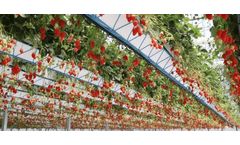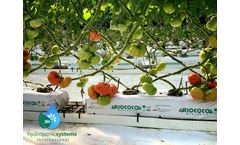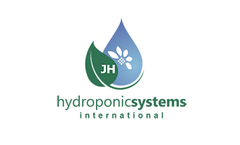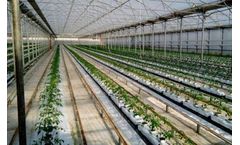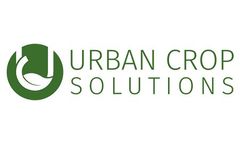Refine by
Cultivation System Articles & Analysis
13 articles found
The strawberry or red strawberry is a perennial plant of the Fragaria genus that belongs to the Rosaceae family. One of the main plants grown in hydroponics is the strawberry. The need for crop rotation is influencing the investigation of new forms of cultivation to give continuity to their ...
The comparison of the amount of water needed to produce a kilo of tomatoes in greenhouse cultivation systems without hydroponics and high-tech greenhouse cultivation with hydroponics yield… A series of differences: Greenhouse tomato cultivation without hydroponics: 30 liters per kilo of tomato. ...
Department of Energy, an international research team under the project name of MacroSystems, primed by Ocean Rainforest, Inc., has been asked to demonstrate the economic and social opportunities of offshore cultivation of seaweeds, specifically a species named Macrocystis pyrifera, aka Giant Kelp, in the U.S. ...
Due to that, all our elevated gutter systems provide the advantages of an elevated system but with the added value of already having a Spacer. ...
This, in conjunction with border controls and safety protocols, seem to favour local or national food distribution systems, opening up an entire new chapter in the debate on self-sufficiency. ...
Agriculture has been a cornerstone of civilisation since time immemorial. As man’s nomadic habits developed into a sedentary lifestyle, it has facilitated the trade and prosperity links that have enabled us to evolve. With the passage of time, globalisation and international trade meant that communities with an excess yield could export their goods to others in which there were food ...
Since their appearance, the Spacers have marked a turning point in the efficiency of hydroponic cultivation drainage systems. There are significant advantages to their use and, at the end of the cycle, they have a positive impact on crop quality and yield. ...
From the outside they may seem ordinary, but on 1 January 2020 researchers will start work in the enclosed ecological plant cultivation system and bakery that could have a huge impact on our food production on Earth, as well as on Mars once humans launch their space exploration efforts. ...
Abstract: This study presents a DLI (Daily Light Integral) and Spectrum-Based Scientific Cultivation Control System (DAS) Development, Design and Application of Luminaire. Effective planning and monitoring of the environmental conditions of plant growth have vital importance in terms of efficiency and control. Nowadays, beyond the control systems ...
Bi-On, a product suitable for use in organic farming Ecological, organic or biological agriculture is a cultivation system based on the optimum use of natural resources without using synthetic chemicals or genetically modified organisms (GMOs), thus being able to produce organic foods, as well as preserving the fertility of the soil and respecting the ...
A review of 300 studies of farm-management systems by the independent Research Institute of Organic Agriculture (FiBL) showed that 80 per cent indicate that organic practices bring environmental benefits. ...
Few native herbaceous perennial warm-season legumes are available for cultivation in the southern United States. These would be useful for pastures, biomass production, wildlife plantings, rangeland reseeding, or native prairie restoration. ...
LCA is used to analyse and evaluate the environmental impact associated with the process of greenhouse cultivation of a tomato crop. Tomato production in kg is selected as a functional unit. Three different tomato production processes were compared: soil cultivation and open and closed hydroponic systems. Three different waste management ...

